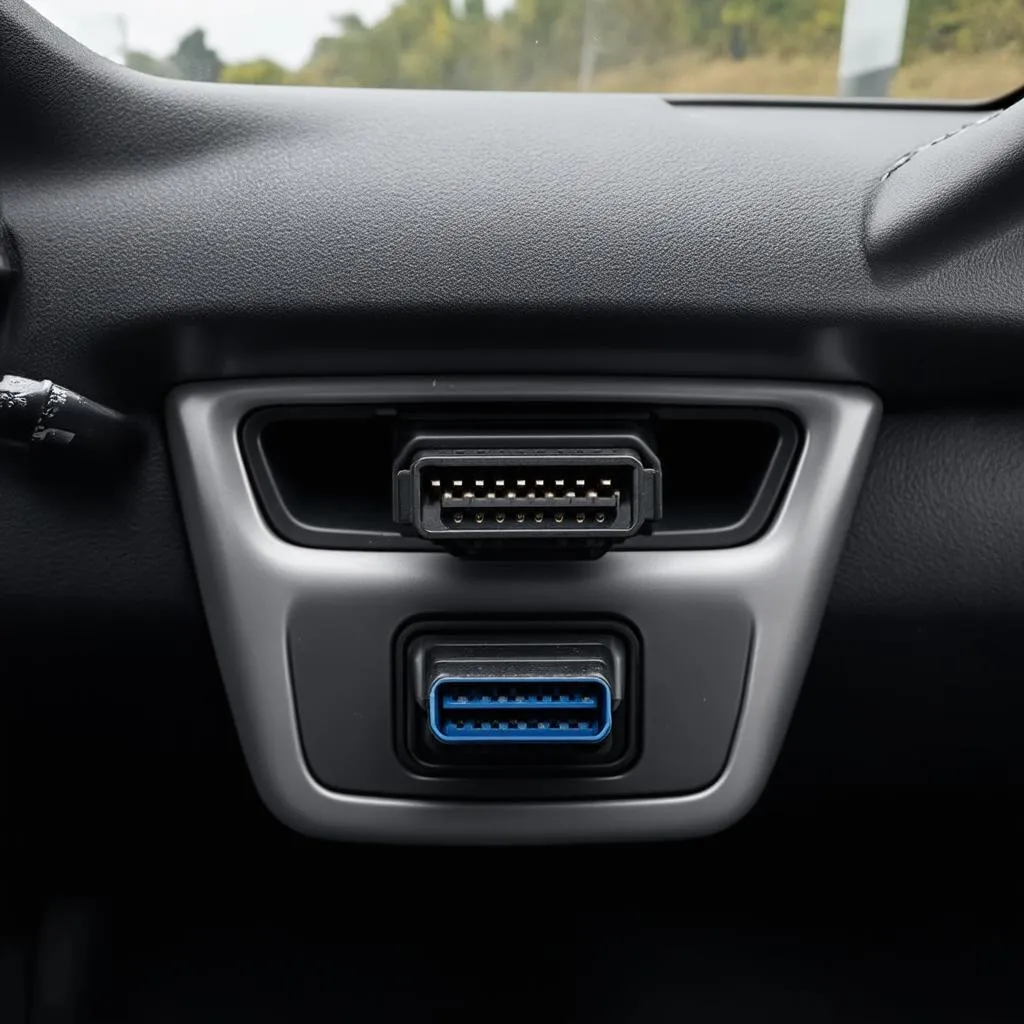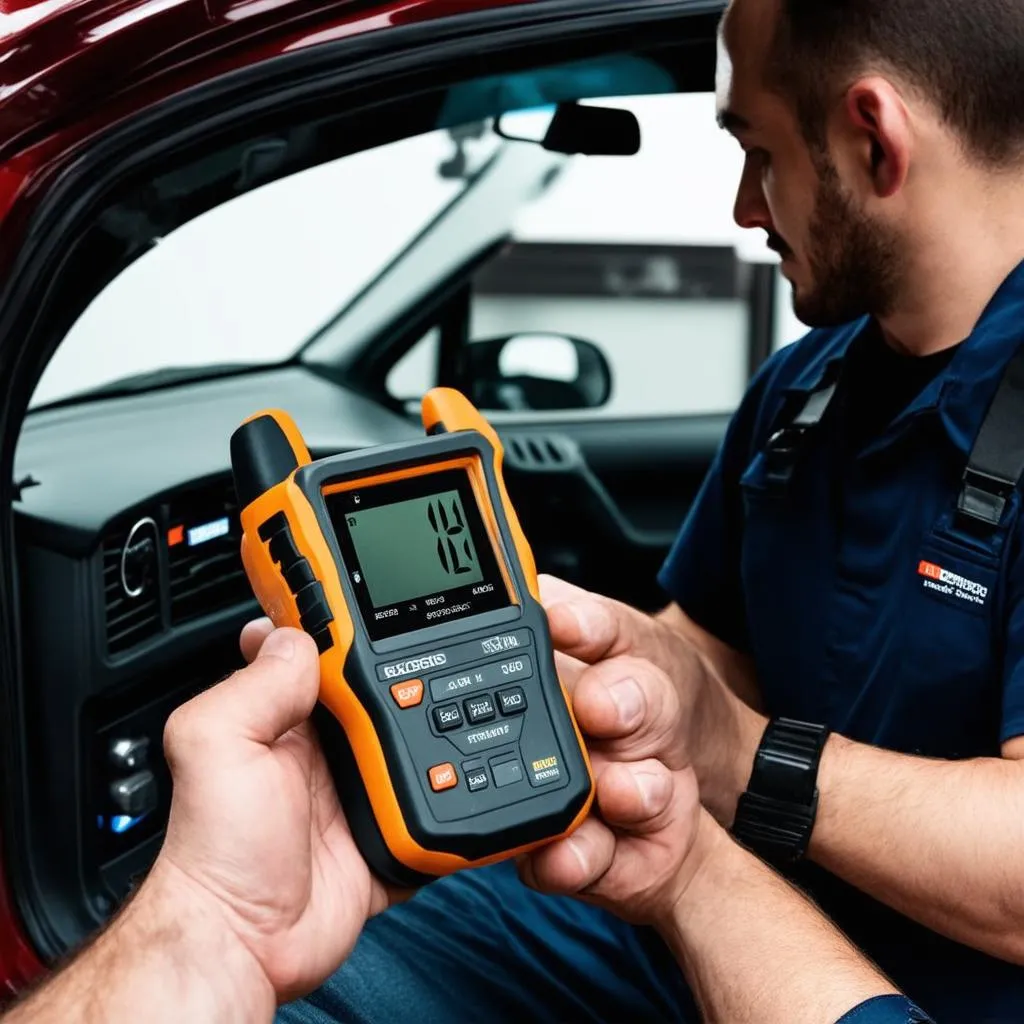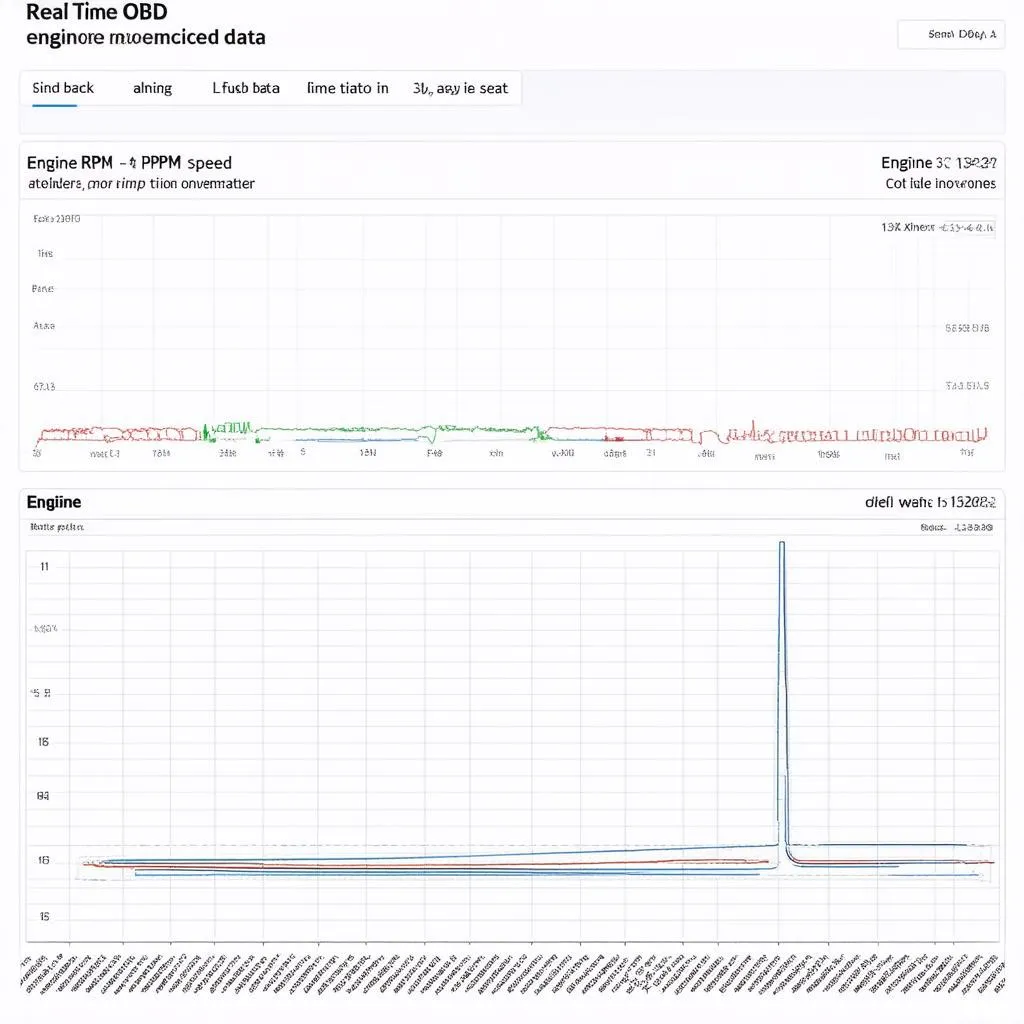Have you ever wondered what that little port beneath your dashboard is used for? You know, the one that looks like a small, rectangular slot with a few pins. Well, that’s your car’s “OBD” port, and it’s more important than you might think. It’s like a secret window into your car’s soul, revealing vital information that can help you maintain its health and keep it running smoothly.
Understanding OBD: The Car’s Diagnostic Port
OBD stands for On-Board Diagnostics, and it’s a system that allows mechanics and even car owners to access and interpret data from a car’s computer. Think of it as a mini-computer within your car, constantly monitoring various systems like the engine, transmission, and emissions.
 obd-port-location
obd-port-location
What is the Purpose of OBD?
The primary purpose of OBD is to diagnose and troubleshoot problems with your car’s engine and other systems. When a car’s computer detects a malfunction, it stores a code (known as a Diagnostic Trouble Code, or DTC) in its memory. By using a device called an OBD scanner, you can read these codes and get an idea of what’s wrong with your car.
How Does OBD Work?
OBD works by sending and receiving information between the car’s computer and a scanner. The scanner uses a specific communication protocol to interact with the car’s computer, which allows it to access and interpret data from different sensors.
What Kind of Information Can OBD Provide?
OBD can provide a wealth of information about your car’s health, including:
- Engine RPM and Speed: This information can be useful for diagnosing engine performance issues.
- Fuel Consumption: OBD can help you understand how much fuel your car is using and identify potential areas for improvement.
- Engine Load: This data indicates how hard the engine is working and can help identify issues with the fuel or ignition system.
- Air-Fuel Ratio: OBD can tell you if the air-fuel mixture is optimized for efficient combustion.
- Exhaust Gas Temperature: This information can be used to diagnose issues with the catalytic converter.
- Diagnostic Trouble Codes (DTCs): These codes provide detailed information about any detected malfunctions.
 obd-scanner-diagnostics
obd-scanner-diagnostics
The Benefits of Using OBD
Using OBD can benefit both car owners and mechanics in numerous ways:
- Faster and More Accurate Diagnosis: By accessing the car’s internal data, OBD scanners can quickly identify the root cause of problems, saving time and money on repairs.
- Improved Fuel Efficiency: By monitoring fuel consumption, you can identify areas where you can improve your driving habits to save fuel.
- Preventive Maintenance: OBD allows you to detect potential problems before they become major issues, leading to fewer breakdowns and repair costs.
- Environmental Benefits: By ensuring your car is running optimally, you can reduce harmful emissions and contribute to a cleaner environment.
OBD: A Modern Necessity
As cars become increasingly sophisticated, OBD has become an essential tool for car owners and mechanics alike. It’s like having a personal doctor for your car, providing valuable insights into its health and helping to prevent costly repairs.
Frequently Asked Questions (FAQs)
-
Q: Can I use my smartphone to access OBD data?
-
A: Yes, there are many smartphone apps that can connect to your car’s OBD port and provide you with real-time data.
-
Q: What are some of the best OBD scanners for DIY car repairs?
-
A: There are several affordable and user-friendly OBD scanners available on the market, such as the BlueDriver and the ANCEL.
-
Q: Where is the OBD port located in my car?
-
A: The OBD port is usually located under the dashboard, on the driver’s side. However, its exact location may vary depending on the car make and model.
-
Q: Can OBD help me improve my car’s performance?
-
A: Yes, by analyzing data like air-fuel ratio and engine load, you can adjust your driving habits to optimize performance and improve fuel efficiency.
 obd-data-analysis
obd-data-analysis
Getting the Most Out of OBD
- Invest in a Quality OBD Scanner: A good scanner can make a significant difference in the accuracy and functionality of your diagnostics.
- Learn How to Use Your Scanner: Take some time to understand how your scanner works and how to interpret the data it provides.
- Stay Informed: Keep up to date on the latest OBD technology and how it can benefit you.
Conclusion
OBD is a powerful tool that can significantly impact your car’s maintenance and performance. By understanding how it works and utilizing its capabilities, you can keep your car running smoothly and save money on repairs. Don’t let your car’s secret language remain a mystery. Unlock the power of OBD today!
Need Help with Your Car’s Diagnostics?
Contact our experts for 24/7 support: +84767531508
Let us know in the comments below what you think about OBD and how it has helped you. Also, feel free to share your questions and experiences with the OBD system.